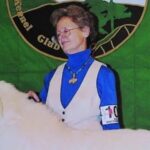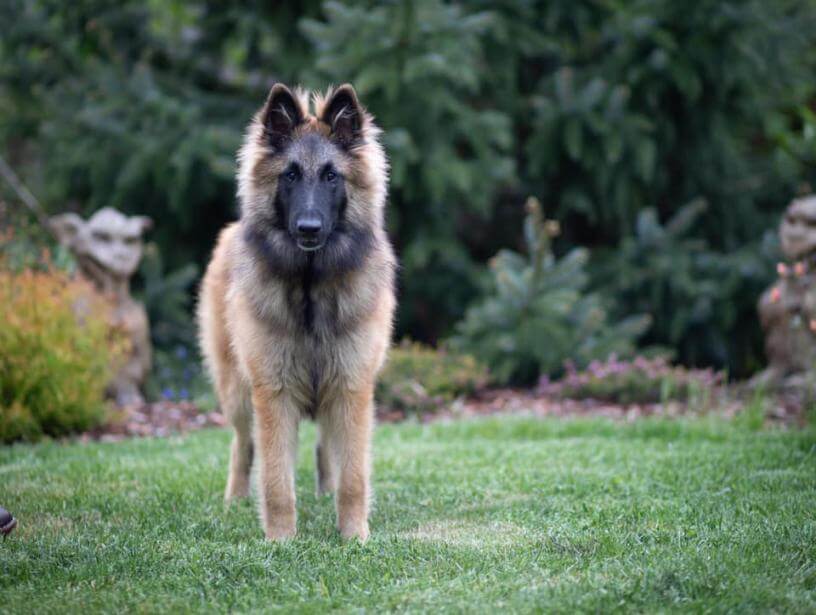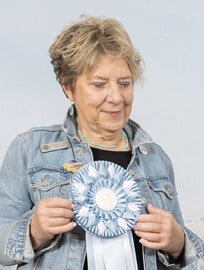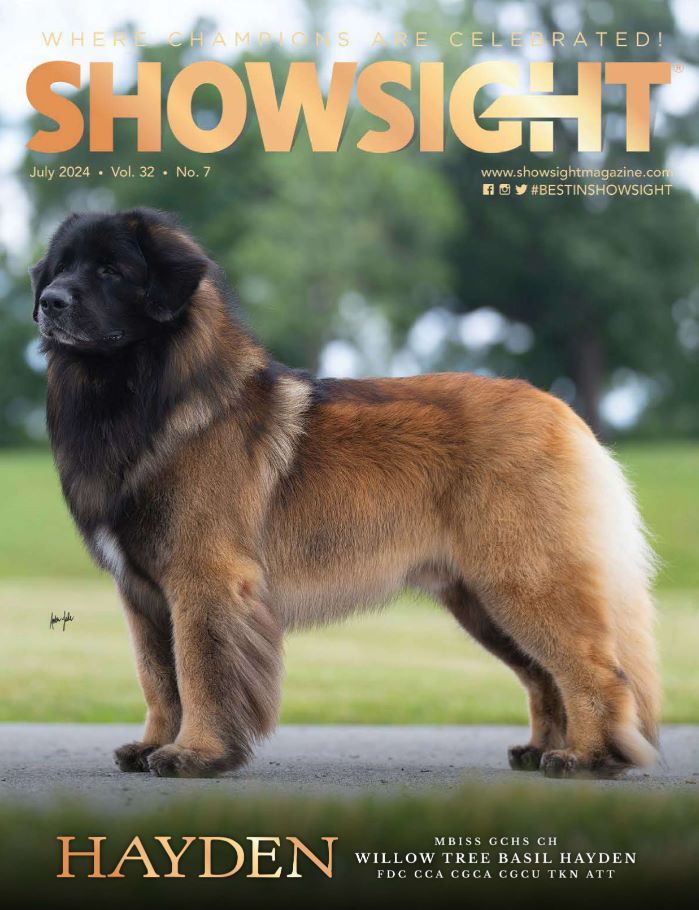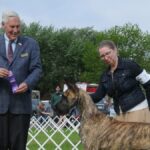Interview with Herding Group Breeder Janina Laurin
Where do I live? How many years in dogs? How many years as a breeder?
Janina Laurin: I live in Connecticut. I am a second generation dog owner/breeder/judge, so I always say, “I’m a lifer.”
What is my kennel name? How many dogs do I currently keep?
Janina Laurin: Our kennel name is Chateau Blanc Kennels, since 1960. Currently, I own two bitches and co-own several others. I co-own several males, including one with my sister, Darlene. We keep low numbers since we’re fairly active in various venues and the breed likes attention and activity.
Which show dogs from the past have been my noteworthy winners?
Janina Laurin: After 50 years of breeding, there are several in many venues. I’ve answered with mostly males under the preservation breeder questions, so here it’s the bitches turn: Ch. Chateau Blanc’s Arch Angel, HTCH Ch. Chateau Blanc’s Desert Wind, our foundation Ch. Kandice de Fauve Charbonne, BISS Ch. Chateau Blanc’s I’m Coyote Trouble, and BIS/BISS Ch. Mishaook’s Lulu @ Chateau Blanc; all of them with multiple obedience or performance titles.
Which have been my most influential sires and dams?
Janina Laurin: From the early ‘70s, Ch. Cyrano de Chateau Blanc; from the ‘80s, Ch. Lancer de Chateau Blanc; from the ‘90s, Ch. Yuma de Chateau Blanc; from the 2000s, Ch. Chateau Blanc’s Evening Star; and since then, the younger males are still making their marks. We are particularly pleased with how our French Import GCHS Jagger du Pays des Sept Vallees has been contributing to the program. Certainly, most of the bitches mentioned above have been influential dams and I would include Ch. Chateau Blanc’s Majority Rules, and more recently, Chateau Blanc’s On Cloud Nine and GCHB Nicha Illion @ Chateau Blanc RN CD FD, whose offspring by Jagger are showing tremendous promise already with BISS, Group-Placing, and HIT winners.
Can I talk a bit about my facilities? Where are my puppies whelped? How are they raised?
Janina Laurin: HA! We do not have any formal facilities. Chateau Blanc is the epitome of the small hobby show kennel. We have a couple of in/out runs for convenience, and a dog room for grooming and bathing with enough room for a bit of training. The dogs enjoy a totally fenced-in yard and are primarily around us for most of the day. Most of the litters have been whelped at my sister Darlene’s. We like “free range chickens.” In other words, they get plenty of age-appropriate exercise, little puppy “conquering” climbs and experiences to help build confidence, and they have a very dog savvy cat to play with until they become too big for her. They generally have been to many “safe” locations for socialization before they leave.
What is my “process” for selecting show puppies? At what age do I make my decisions?
Janina Laurin: Selecting show puppies is exactly that, a process. The three of us (Edeltraud, Darlene, and myself) tend to discuss this endlessly and we frequently prioritize differently. However, initially, we watch them for good bones and angulation, how the heads develop, and later, personalities and temperament. Sometimes you just know “this is the one,” and other times a late bloomer comes on strong. By 8-9 weeks, we have pretty much decided.
How do I prepare my pups for the show ring? Does my breed require any special preparation?
Janina Laurin: It’s amazing how 2-5 minutes in the ring can be so stressful. We do practice entering the ring with attitude, acclimating them to that single person standing there and approaching (huge for most Herding/Working dogs) and we do spend a fair amount of time acclimating them to being touched all over.
Is my breed hand-stacked or free-stacked in the show ring? Why is it presented in this manner?
Janina Laurin: Our breed standard clearly states, “…standing squarely on all fours,” so they are primarily a free-stacking breed. Judges like hand-stacking and not flinching, so I encourage owners to TRAIN THEIR DOGS to a hand-stack, at least for the initial exam. The dogs are much more comfortable free-stacking as it allows them the freedom of choice to be aware of their surroundings. Most Herding breeds don’t like being endlessly “fiddled with” as it sends the wrong message, and frankly, most dogs set themselves up better than the owners.
Are Performance and Companion titles important to me as a breeder? Are parent club titles?
Janina Laurin: Performance and Companion titles are a benchmark for the ability of the dog, but I don’t necessarily base breeding choices on a dog/bitch that has a multitude of titles. If it’s built right and is sound in temperament, it will be able to do its job if asked. As a breeder, the most important parent club designation is our BAR (Breeder Achievement Recognition) award. It’s similar to the ROM in so many breeds. And, of course, winning the National, Bred-By, and Stud Dog/Brood Bitch classes are all important.
In my opinion, is my breed in good condition overall? Any trends that warrant concern?
Janina Laurin: As a community within our breed, we need to strive for consistent, above average, quality to achieve serious consideration. Trends which lately should be cautioned against are “long and low.” While our breed is square, this does not mean it should not have reach and drive. We really need to have our dogs move better for a Herding breed. It’s totally doable. We are otherwise in good shape.
Is my breed well-suited to be a family dog? Who are the best candidates to own my breed?
Janina Laurin: Well, I grew up with them, so I will, of course, say yes. The best candidates are dog savvy owners who are willing to actively engage their dogs in activities with the family.
Do I feel that my breed is supported by a sufficient number of preservation breeders?
Janina Laurin: No. I do worry about the future of the breed or having responsible long-term preservation breeders. We have a few very promising young people, and hopefully, they will stick with it.
For a bit of fun, what’s the most amusing thing I’ve ever experienced with a Herding Dog?
Janina Laurin: It’s an endless amusement. They will never cease to keep you on your toes.
Anything else I would like to share about myself? Any special message I have for all of us in the fancy?
Janina Laurin: Enjoy the sport. Look, watch, and learn. There is so much knowledge out there, don’t be afraid to seek it out.
